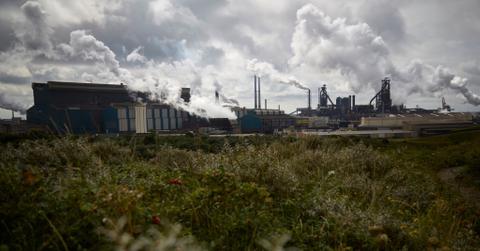Carbon Removal Versus Carbon Capture: What’s the Difference?
Carbon removal and carbon capture are different beasts. Here’s how they work and help the planet. Let's see how they are both different.
July 5 2022, Published 3:27 p.m. ET
When it comes to climate action, corporations often resort to greenwashing, pushing net-zero narratives with decades of wiggle room. Sifting through these claims requires an understanding of climate jargon, including carbon removal and carbon capture.
What’s the difference between carbon removal and carbon capture? Let’s demystify these terms, plus dig into examples of companies doing the work of decarbonizing the environment.
What’s the difference? Carbon removal versus carbon capture
Carbon capture and carbon removal are two different practices. Carbon capture (carbon capture and use or storage, or CCUS) captures carbon dioxide from a flue or smokestack. Carbon capture may take place in a coal-fired power plant or another carbon-producing factory. When the carbon is captured, the process sends it underground. That same carbon is then used to fuel production for commercial products, ultimately recirculating it back into the atmosphere.
Carbon removal traps carbon dioxide directly from the atmosphere. Unlike CCUS, carbon removal can reduce the carbon dioxide levels in the atmosphere. It’s a more long-lasting process that can improve the planet’s environmental wellbeing over time.
That isn't to say carbon removal is the be-all-end-all for saving the planet. Reducing carbon emissions is the only foolproof way to keep carbon out of the atmosphere. Climate activists argue carbon removal shouldn't be a replacement for emission reduction, now or in the future.
How does carbon removal work?
Carbon removal works by removing carbon dioxide from the environment and storing it for years, decades, centuries, or even longer. There are many ways to achieve this, with more solutions regularly popping up.
Reforestation or deforestation removes carbon through large, new forests. This isn't a short-term solution, but it is effective. Farmers practicing the no-till methodology are able to sequester carbon in the soil, which removes it from the atmosphere.
Other carbon removal tools include biochar (carbon charcoal produced using biomass resources), crushed rock mineralization, carbon-sucking machines, using resources like lime to make the ocean alkaline, fertilizing the ocean, pushing surface ocean water down, and more.
What are some of the top carbon removal companies?
In April, Stripe created Frontier and put aside a whopping $925 million to invest in carbon removal technologies over the next decade. Frontier is an advance market commitment (AMC) that “aims to accelerate the development of carbon removal technologies by guaranteeing future demand for them.”
Carbon removal is still a growing field, but this commitment shows potential for future growth — a growth that will be born out of necessity and enthusiasm alike.
CarbonCure Technologies focuses on the concrete industry (because cement contributes about 7 percent of global emissions). CarbonCure removes CO2, remineralizes it, and uses it to create new concrete.
Boston Metal is decarbonizing steel production, which is hugely beneficial because steel contributes about 8 percent of global emissions. Boston Metal uses direct electric current to create steel without heat.
Climeworks uses direct air capture to remove CO2 directly from the air. Climeworks has received major investments from Microsoft (MSFT).
Carbon capture and carbon removal may seem like interchangeable terms, but they aren't. However, they’re both more effective than carbon offsetting, which helps companies greenwash with carbon credits that don’t actually change the rate of emissions or the level of atmospheric carbon. While all are useful tools in a troubled environment that could use all the help it can get, long-term carbon removal is the best bet.



